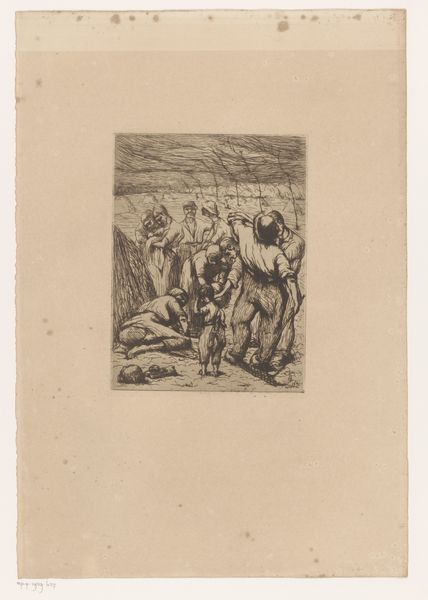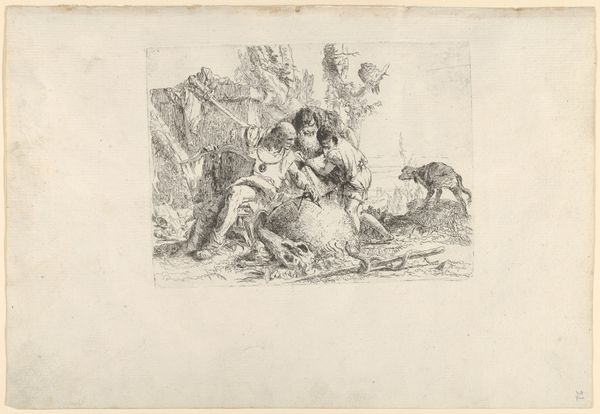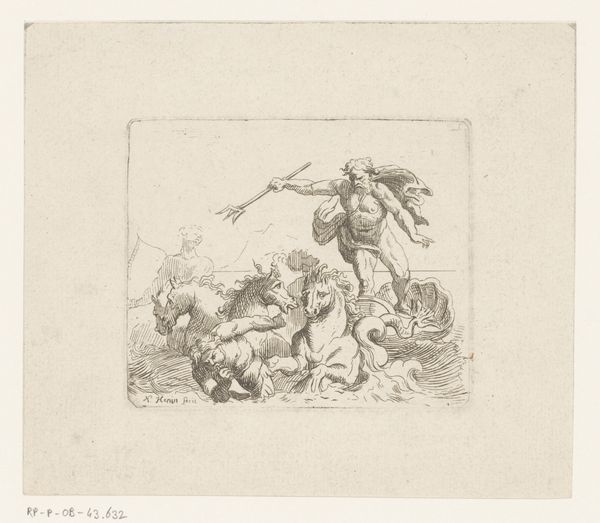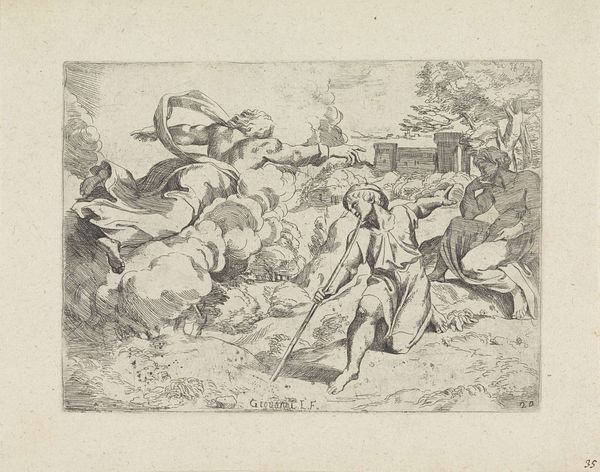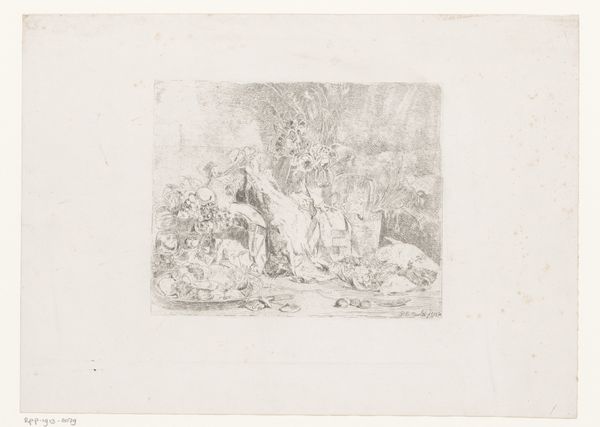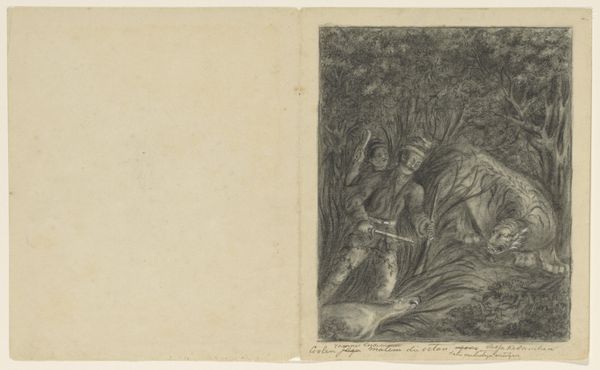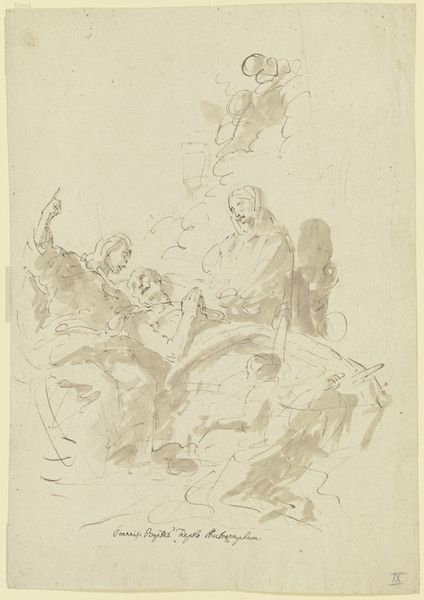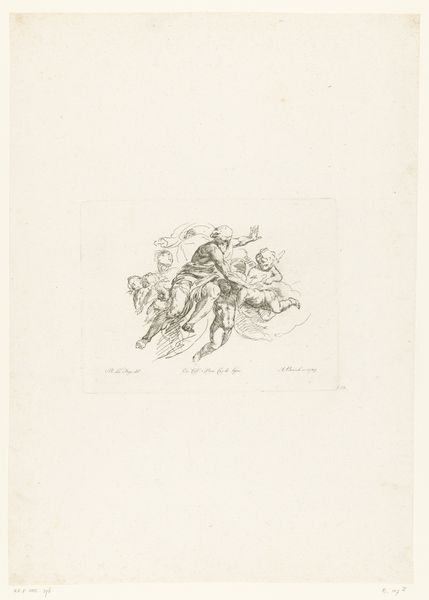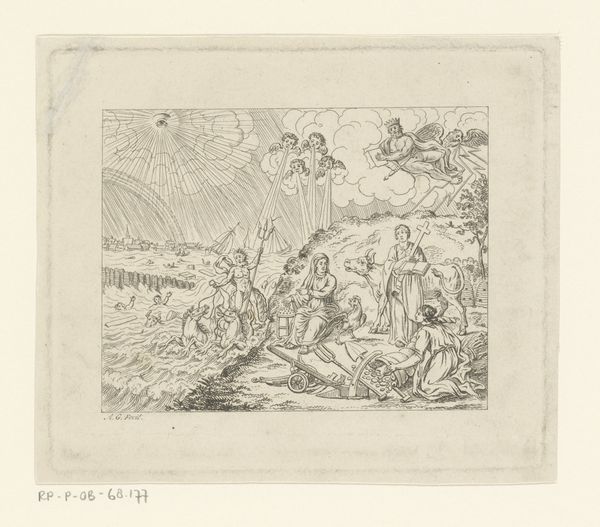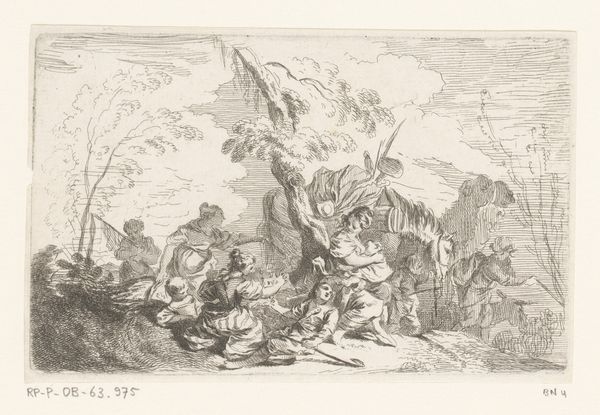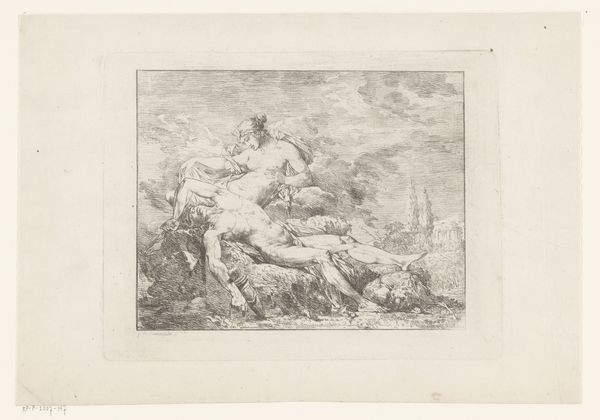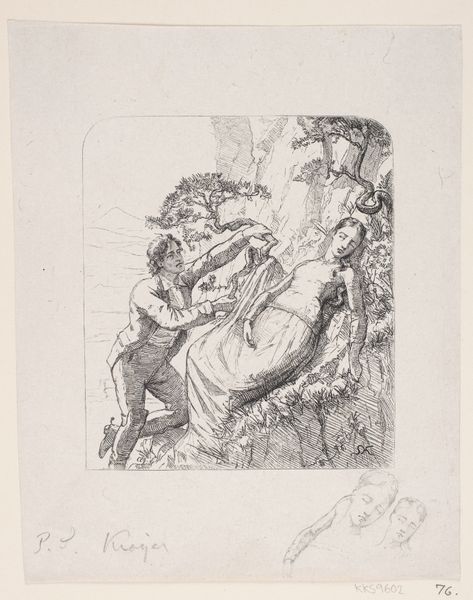
drawing, etching, intaglio
#
drawing
#
baroque
#
etching
#
intaglio
#
figuration
#
history-painting
Dimensions: height 154 mm, width 127 mm, height 152 mm, height 128 mm
Copyright: Rijks Museum: Open Domain
Editor: This is "Lot and his Daughters and Susanna and the Elders," an etching and intaglio print dating roughly from 1708 to 1779, created by Honoré Coussin. I am struck by the… discomfort. What historical contexts should we consider when interpreting this piece? Curator: That's a keen initial reaction. Coussin places two Old Testament narratives – Lot and his daughters, and Susanna and the Elders – side-by-side. Each scene involves themes of corruption, vulnerability, and perhaps most potently, the abuse of power dynamics. Why do you think the artist chose to present these two distinct, but morally fraught, narratives within a single frame? Editor: Perhaps to heighten the viewer's sense of unease, to not let us off the hook. Instead of focusing on just one incident, Coussin demands we confront the systemic nature of such violations by forcing us to look at them together? Curator: Precisely. The print enters a visual and moral dialogue around patriarchal power structures and the societal objectification of women that continue to echo throughout art history and contemporary society. What strikes you about the visual language used by Coussin? Editor: It's stark, raw, but it is a Baroque work. Despite that flourish, it shies away from beautification. The etching feels intentionally… unflattering, emphasizing the grimness. The use of line doesn't soften any of the narrative. Curator: This points towards a key feature of art's public role: its capacity for social commentary. Coussin is not simply illustrating Bible stories; he’s using widely known narratives to critique social issues. What can the display of such potentially shocking imageries signify in our contemporary world? Editor: It highlights that uncomfortable art challenges our current systems and reminds us that some problems are unfortunately still pervasive, and maybe visual records are a testament and evidence that should never be erased or beautified. Curator: A vital observation, and an excellent reminder that art from the past remains highly relevant as social reflection, for public debates of equality and justice.
Comments
No comments
Be the first to comment and join the conversation on the ultimate creative platform.
